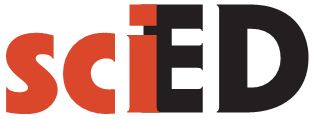Abstrakt
V souvislosti s tvorbou středoškolské učebnice fyziky, která v současné době probíhá na katedře didaktiky fyziky Matematicko-fyzikální fakulty Univerzity Karlovy, je cílem této studie odpovědět na otázku, jaké jsou požadavky kladené na učebnice fyziky nebo obecněji na učebnice přírodních věd, které se opakovaně objevují ve studiích publikovaných v mezinárodním prostředí. K řešení této otázky byla využita systematická rešerše v databázi Web of Science, obsahová analýza nalezených studií a jejich komparace. Zejména na základě volby různých kombinací klíčových slov bylo nalezeno šest relevantních studií. V nich bylo identifikováno 25 opakujících se požadavků kladených na fyzikální nebo přírodovědné učebnice. Významově podobné požadavky byly sdruženy do tří základních skupin (a několika podskupin): i) obsahové požadavky (oborový obsah nezávislý na žákovi, oborový obsah orientovaný na žáka, kognice žáků, motivace žáků, různorodost); ii) formální požadavky (verbální stránka, grafická stránka); iii) požadavky kladené na strukturu učebnice (rozložení ilustrací a textu, uspořádanost učebnice). V rozsáhlé příloze článku jsou uvedena původní (přesná) znění požadavků kladených na učebnice. Na základě výsledků studie budou zkonstruovány nástroje, prostřednictvím nichž budou vznikající učebnici fyziky reflektovat žáci, učitelé a didaktikové fyziky. Výsledky studie a vzniklé nástroje budou využitelné také k reflexi dalších přírodovědných učebnic.
Reference
Campanario, J. M. (2006). Using textbook errors to teach physics: Examples of specific activities. European Journal of Physics, 27, 975–981. https://doi.org/10.1088/0143-0807/27/4/028
Cheung, D., & Ng, P.‐H. (2000). Science teachers' beliefs about curriculum design. Research in Science Education, 30(4), 357–375. https://doi.org/10.1007/BF02461556
Çırakoğlu, N., Toksoy, S. E., & Reisoğlu, İ. (2022). Designing, developing, and evaluating an interactive e-book based on the Predict-Observe-Explain (POE) method. Journal of Formative Design in Learning, 6, 95–112. https://doi.org/10.1007/s41686-022-00071-3
Devetak, I., & Vogrinc, J. (2013). The criteria for evaluating the quality of the science textbooks. In M. S. Khine (Ed.), Critical analysis of science textbooks: Evaluating instructional effectiveness (pp. 3–15). Springer. https://doi.org/10.1007/978-94-007-4168-3_1
Handayani, S., Adisendjaja, Y. H., & Kusnadi (2021). The development of Musi estuary ecosystem alternative teaching materials as supplementary books for biology learning in high schools. Journal of Physics: Conference Series, 1806, 012155. https://doi.org/10.1088/1742-6596/1806/1/012155
Kolářová, R. (2013). Fyzika na základní škole po roce 1945 z pohledu vývoje školské soustavy a učebnic fyziky. Matematika–fyzika–informatika, 22(4), P31–P46.
Lepil, O. (2010). Teorie a praxe tvorby výukových materiálů. Univerzita Palackého v Olomouci. http://www.skolyprovenkov.ostrozsko.cz/prilohy/skola18/lepil.pdf
Lepil, O. (2013). K vývoji učebnic fyziky pro střední školu gymnaziálního typu. Matematika–fyzika–informatika, 22(4), P16–P30.
McDonald, C. V. (2016). Evaluating junior secondary science textbook usage in Australian schools. Research in Science Education, 46, 481–509. https://doi.org/10.1007/s11165-015-9468-8
Musilová, J. (2012). Fyzikální omyly ve výuce mechaniky. Československý časopis pro fyziku, 62(5–6), 346–357.
Musilová, J. (2016). Nejde jen o kyvadlo. Československý časopis pro fyziku, 66(6), 393–396.
Ogan-Bekiroglu, F. (2007). To what degree do the currently used physics textbooks meet the expectations? Journal of Science Teacher Education, 18(4), 599–628. https://doi.org/10.1007/s10972-007-9045-8
Sikorová, Z. (2004). Výběr učebnic na základních a středních školách. Ostravská univerzita, Pedagogická fakulta.
Sliško, J. (2006). Electric charge on humans: Should students buy what the textbooks sell? Physics Education, 41, 114–116. https://doi.org/10.1088/0031-9120/41/2/F08
Vojíř, K., & Rusek, M. (2019). Science education textbook research trends: a systematic literature review. International Journal of Science Education, 41(11), 1496–1516. https://doi.org/10.1080/09500693.2019.1613584
Volf, I., & Vybíral, B. (2013). Vývoj českých učebnic fyziky do poloviny 20. století. Matematika–fyzika–informatika, 22(4), P2–P15.
Wan Sulaiman, W. N. A., & Mustafa, S. E. (2020). Usability elements in digital textbook development: A systematic review. Publishing Research Quarterly, 36(1), 74–101. https://doi.org/10.1007/s12109-019-09675-3
Zajkov, O., Gegovska-Zajkova, S., & Mitrevski, B. (2017). Textbook-caused misconceptions, inconsistencies, and experimental safety risks of a grade 8 physics textbook. International Journal of Science and Mathematics Education, 15(5), 837–852. https://doi.org/10.1007/s10763-016-9715-0
Žák, V. (2018). Kvalita fyzikálního vzdělávání v rukou učitele. Univerzita Karlova, Nakladatelství Karolinum.
Žák, V., & Kolář, P. (2023). Physics curriculum in upper secondary schools: What leading physicists want. Science Education, 107(3), 677–712.
- Autoři si ponechávají copyright a garantují časopisu právo prvního publikování, přitom je práce zároveň licencována pod Creative Commons Attribution licencí, která umožňuje ostatním sdílet tuto práci s tím, že přiznají jejího autora a první publikování v tomto časopisu.
- Autoři mohou vstupovat do dalších samostatných smluvních dohod pro neexkluzivní šíření práce ve verzi, ve které byla publikována v časopise (například publikovat ji v knize), avšak s tím, že přiznají její první publikování v tomto časopisu.
- Autorům je dovoleno a doporučováno, aby zpřístupnili svou práci online (například na svých webových stránkách) před a v průběhu redakčního řízení jejich příspěvku, protože takový postup může vést k produktivním výměnám názorů a také dřívější a vyšší citovanosti publikované práce (Viz Efekt otevřeného přístupu).
